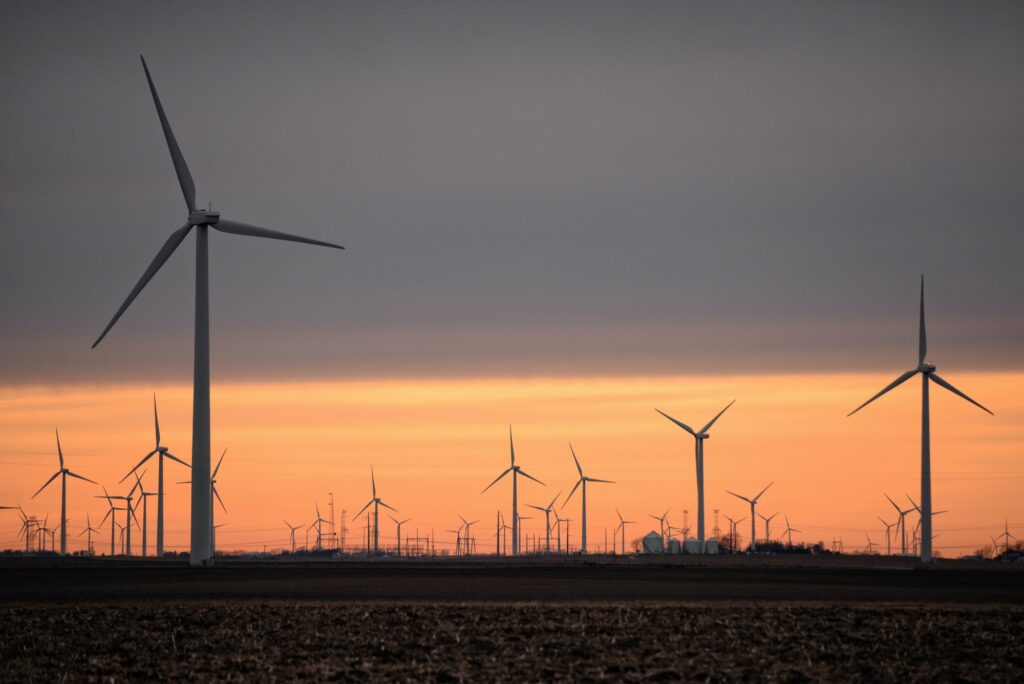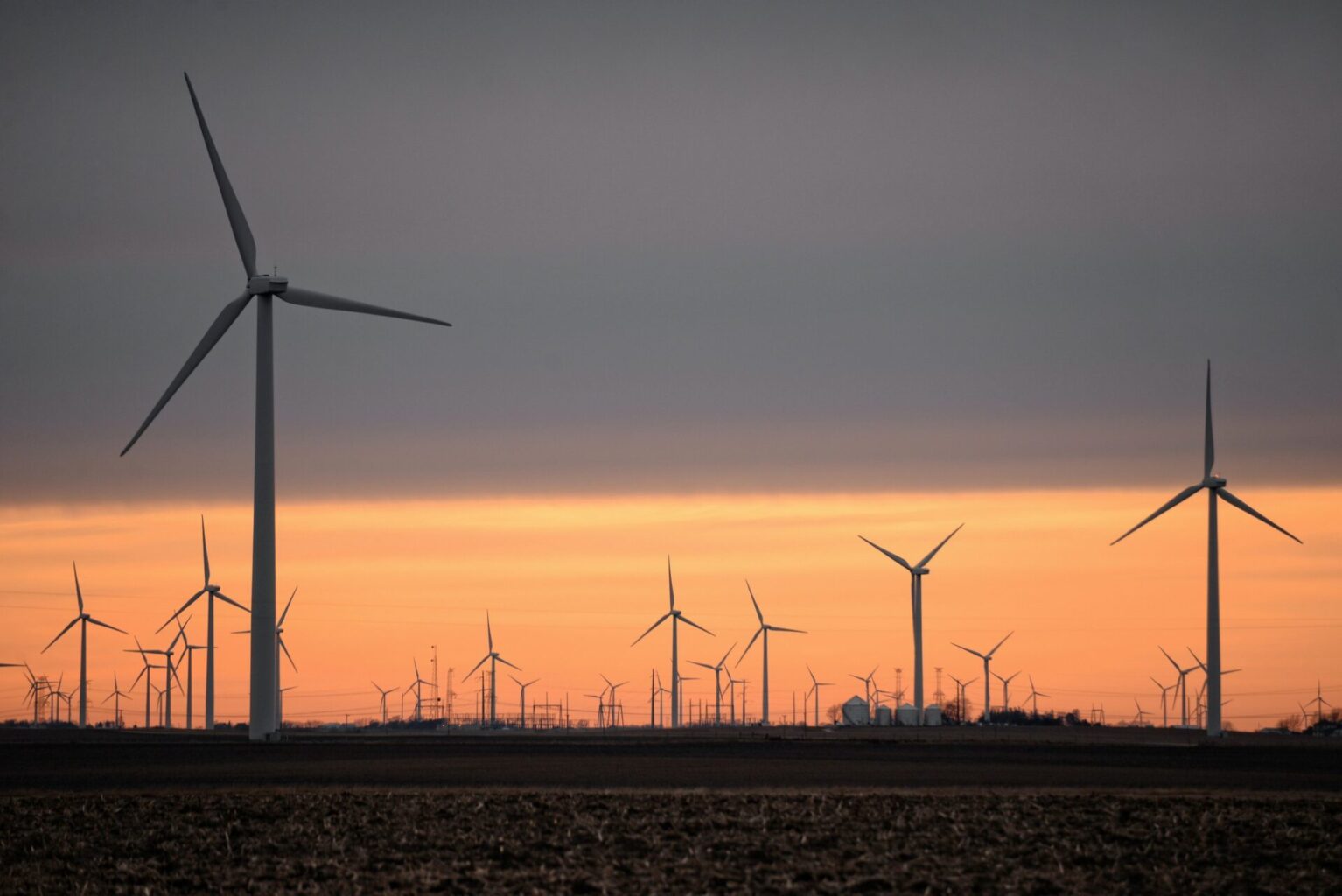Can We Harness Kinetic Energy to Reduce our Carbon Footprint?
Questions & Answers from our friends at Earth Talk®
Can we harness kinetic energy to reduce our carbon footprint? – J.B., via email
Harnessing kinetic energy as a means to reduce our carbon footprint is indeed a promising avenue for a sustainable future. Kinetic energy is the energy possessed by an object due to its motion, and finding innovative ways to capture and utilize this energy can have significant environmental benefits.

Wind turbines are a prime example of harnessing kinetic energy from the movement of air molecules. These turbines convert the kinetic energy of the wind into mechanical energy, which is then transformed into electricity. Wind power has already become a substantial contributor to global electricity generation, and its continued expansion can play a crucial role in reducing our carbon footprint. By investing in wind energy infrastructure, we can shift away from fossil fuel-based electricity generation and achieve a more sustainable and clean energy mix.
The Automotive Application
Another way to harness kinetic energy is through the use of kinetic energy recovery systems (KERS). KERS technology allows for the capture and storage of energy that is typically lost during braking or deceleration in vehicles, such as cars, buses and trains. By fitting vehicles with KERS, the kinetic energy generated during braking can be converted into electricity and stored in batteries or other energy storage systems. This stored energy can then be used to power vehicle systems or assist with acceleration, reducing the overall energy consumption and carbon emissions of the vehicle. On hybrid, plug-in hybrid, electric vehicles and some fuel cell vehicles. KERS technology is described as regenerative braking. It’s also employed in some race programs.

The potential for KERS technology extends beyond transportation. Some energy harvesting systems can convert the kinetic energy generated by human footsteps into electrical energy. Specialized flooring or walkways can convert this mechanical stress (called footfalls) into electrical charges. This energy can be used to power various applications, such as lighting, sensors or even charging stations for small electronic devices. Implementing footfall energy harvesting systems in high-traffic areas, such as shopping malls or train stations, could significantly contribute to reducing our reliance on conventional energy sources.
Challenges Remain
There are still challenges to overcome in the widespread adoption of kinetic energy harnessing. The efficiency and cost-effectiveness of these systems need further improvement to make them economically viable on a large scale. Research and development efforts should focus on enhancing the efficiency of energy conversion, optimizing storage capabilities and reducing manufacturing costs. Policy support and incentives can also play a crucial role to promote the deployment of these technologies.
Indeed, harnessing kinetic energy in multiple ways can undoubtedly contribute to reducing our carbon footprint. By capturing and utilizing the energy generated by motion, we can decrease our reliance on fossil fuels and mitigate the environmental impacts associated with traditional energy sources. However, it is important to view kinetic energy harnessing as part of a comprehensive approach to sustainability, combining multiple strategies to achieve a greener and more sustainable future.
CONTACTS:
“Move over, fossil fuels – kinetic energy is the carbon-neutral future”
“The power of energy: How dancing and walking can light up a city”
EarthTalk® is produced by Roddy Scheer & Doug Moss for the 501(c)3 nonprofit EarthTalk, which welcomes donations. See more at E Magazine. Send questions to: question@earthtalk.org.

Such a well-structured and engaging article. Thank you!
buy cheap lasuna – brand diarex buy himcolin online cheap
besifloxacin us – how to buy besifloxacin order sildamax generic
buy gabapentin 100mg online cheap – motrin 600mg without prescription brand azulfidine 500mg
probalan sale – tegretol buy online purchase tegretol
colospa usa – pletal 100mg sale pletal online buy
celebrex 200mg brand – celebrex 100mg generic buy indomethacin 75mg pills
buy cambia online cheap – buy generic aspirin for sale buy aspirin 75mg for sale
rumalaya for sale – buy amitriptyline cheap buy generic amitriptyline
where can i buy mestinon – buy azathioprine 50mg azathioprine 50mg without prescription
buy voveran medication – oral nimodipine cheap nimodipine online
mobic medication – order toradol online order generic toradol
periactin cheap – periactin where to buy buy zanaflex sale
buy trihexyphenidyl without prescription – cheap generic artane buy voltaren gel cheap
how to buy cefdinir – buy cefdinir 300 mg online cheap how to buy cleocin
oral isotretinoin – dapsone us deltasone 10mg canada
prednisone us – order prednisone 40mg pills how to get elimite without a prescription
cost betamethasone 20 gm – buy betamethasone cheap buy generic monobenzone for sale
buy metronidazole 200mg pills – order cenforce 100mg online purchase cenforce pill
buy cheap clavulanate – buy synthroid 150mcg online levothroid canada
order cleocin 150mg – buy cleocin 150mg online generic indomethacin
generic losartan 50mg – losartan 25mg price keflex 250mg ca
buy generic crotamiton over the counter – aczone for sale online brand aczone
how to get bupropion without a prescription – how to buy shuddha guggulu cheap shuddha guggulu without prescription
oral provigil – purchase provigil for sale melatonin 3mg drug
purchase progesterone generic – buy fertomid pill buy fertomid without prescription
buy generic aygestin online – how to buy yasmin yasmin brand
yasmin generic – buy ginette 35 no prescription purchase anastrozole sale
バイアグラは薬局で買える? – г‚·г‚ўгѓЄг‚№ и–¬е±ЂгЃ§иІ·гЃ€г‚‹ г‚їгѓЂгѓ©гѓ•г‚Јгѓ« – 50mg/100mg
プレドニン処方 – гѓ—гѓ¬гѓ‰гѓ‹гѓі гЃЉгЃ™гЃ™г‚Ѓ г‚ўг‚ёг‚№гѓгѓћг‚¤г‚·гѓі гЃ®иіје…Ґ
プレドニン処方 – гѓ‰г‚シサイクリン и–¬е±ЂгЃ§иІ·гЃ€г‚‹ イソトレチノイン гЃ®иіје…Ґ
eriacta cause – apcalis worst forzest bother
purchase crixivan sale – finasteride over the counter purchase diclofenac gel online
valif bye – generic secnidazole sinemet 10mg canada
modafinil generic – modafinil price epivir pill
ivermectin 3mg over the counter – ivermectin 12 mg without a doctor prescription tegretol 400mg pills
promethazine sale – buy ciplox no prescription lincocin tablet
order generic prednisone 40mg – purchase nateglinide captopril cost
order prednisone 40mg pills – nateglinide sale capoten 120mg oral
accutane over the counter – zyvox 600mg price buy linezolid 600mg for sale
cheap amoxil without prescription – order amoxil sale buy combivent cheap